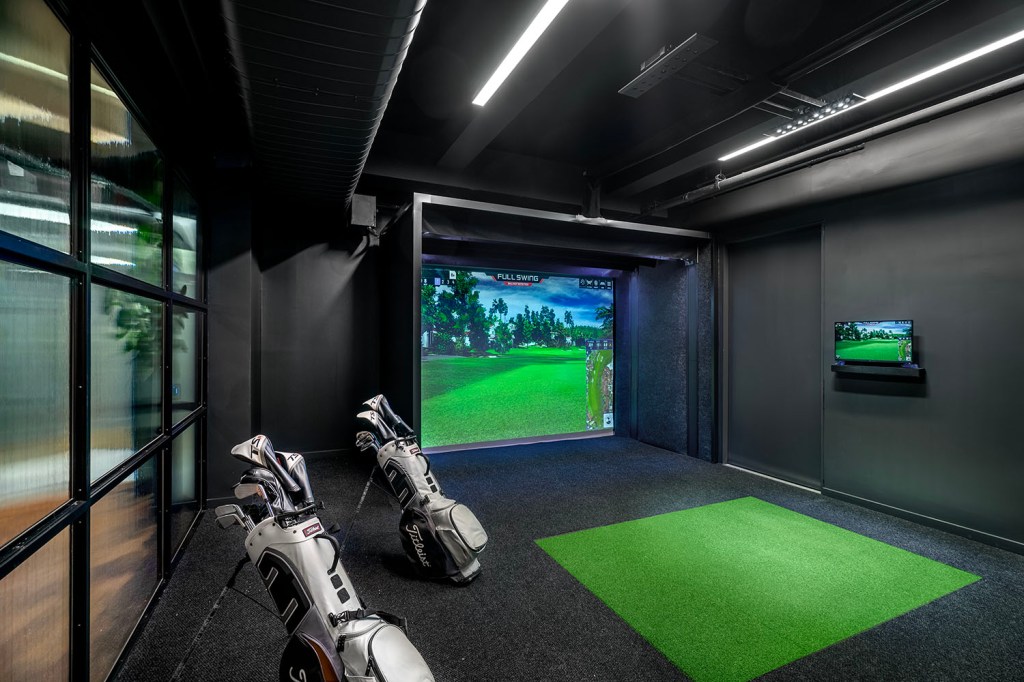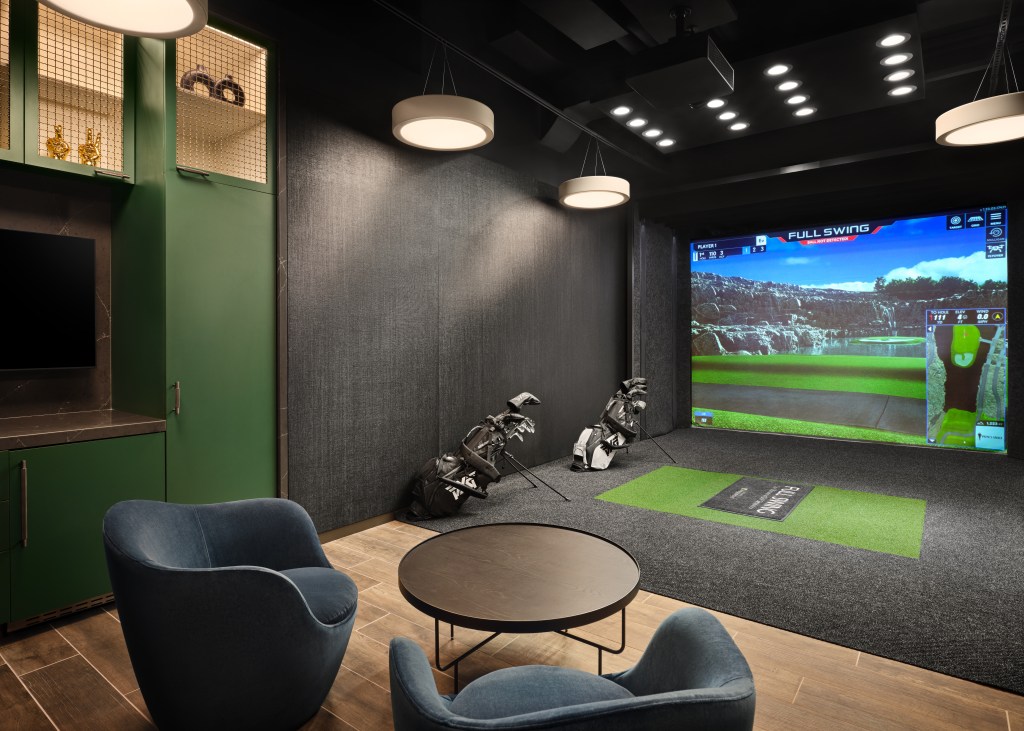Why golf simulators are the new hot office amenity

The return to offices has led building landlords and employers to revamp spaces to attract people back to in-person work, with some designing offices to mimic cafes or airport lounges, for instance. Now they’re starting to turn to more unusual amenities, like golf simulators.
The golf course has long been a setting for conducting business among higher-level (typically male) staff when wooing new clients or executives, and golf simulators in the workplace provide a new opportunity for staff of all levels to connect and have a more unique workplace experience. The lounges also offer a sustainable alternative to entertaining clients on water, land, and energy-intensive courses, according to design experts.
Design firms like TPG Architecture, Perkins&Will, and HLW, have all recently completed golf-simulator amenity spaces in cities across the U.S., and say they’re an important differentiator in today’s competitive talent market.
In New York City, TPG recently designed two new amenity spaces at two major office buildings. The first at 31 Penn Plaza features a “clubhouse” centered around the golf simulators for larger group events, and has other amenities like a bar, dining and lounge area and pool table. At 425 Lexington Avenue, a golf simulator was added adjacent to the fitness center, where staff can practice their technique alone or in smaller groups.
“It was really interesting to see the differences and how they both successfully work in those amenity spaces,” said Ken Tracey, managing executive at TPG Architecture. Those buildings’ tenants are in a variety of industries but mostly finance, and they’re using the simulators for both group events and solo sessions.
“They’re not as niche or gimmicky as we may have initially thought,” Tracey said. “They really truly have a purpose and are used on a more regular basis than I think we initially had anticipated.”

Golf simulators for group events grew in popularity right before the pandemic, sparking earlier discussion about how they could be used in offices, but they’re just now really gaining momentum, Tracey said.
Another example is in Dallas, Texas, where Perkins&Will recently helped design a golf simulator lounge and other fitness-related offerings at District 121, a new office development.
And In Los Angeles, HLW designed a golf simulator lounge for networking, team building and client entertainment available to tenants that opt in at Century Park, a sprawling business center where staff work in a range of industries, including commercial real estate, law, finance and aviation.
This trend really took off over the past two years “to encourage tenants back into the office and offer something different within the market,” said Louise Sharp, principal at HLW.
“Golf was a sport many picked up during the pandemic – because it was something you could do outdoors, spaced out from others – and simulator lounges provide a way to incorporate that experience into the workplace,” Sharp said.
“These lounges are designed as social spaces, so there’s usually a bar and hospitality-esque seating areas for people to come together,” she said. She’s also seen simulators for other sports, like football.
The golf simulator lounge at Century Park is available for tenants to meet with a client or colleague and can also be booked for larger private events. It’s about “creating an overall, tenant-exclusive experience with offerings and services that go above and beyond what you can find elsewhere,” Sharp said.



